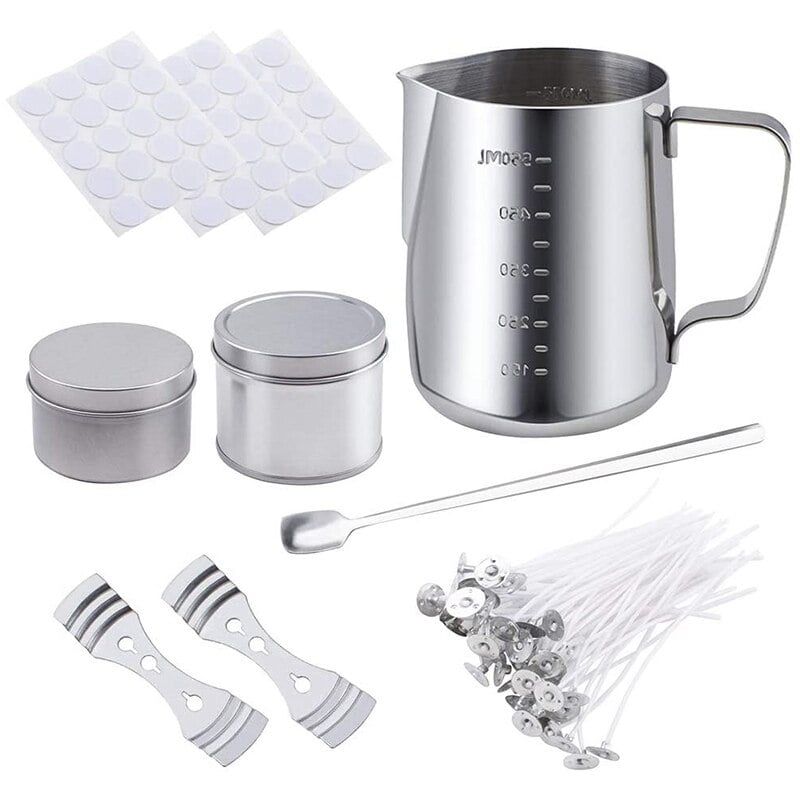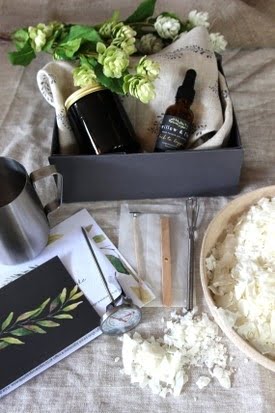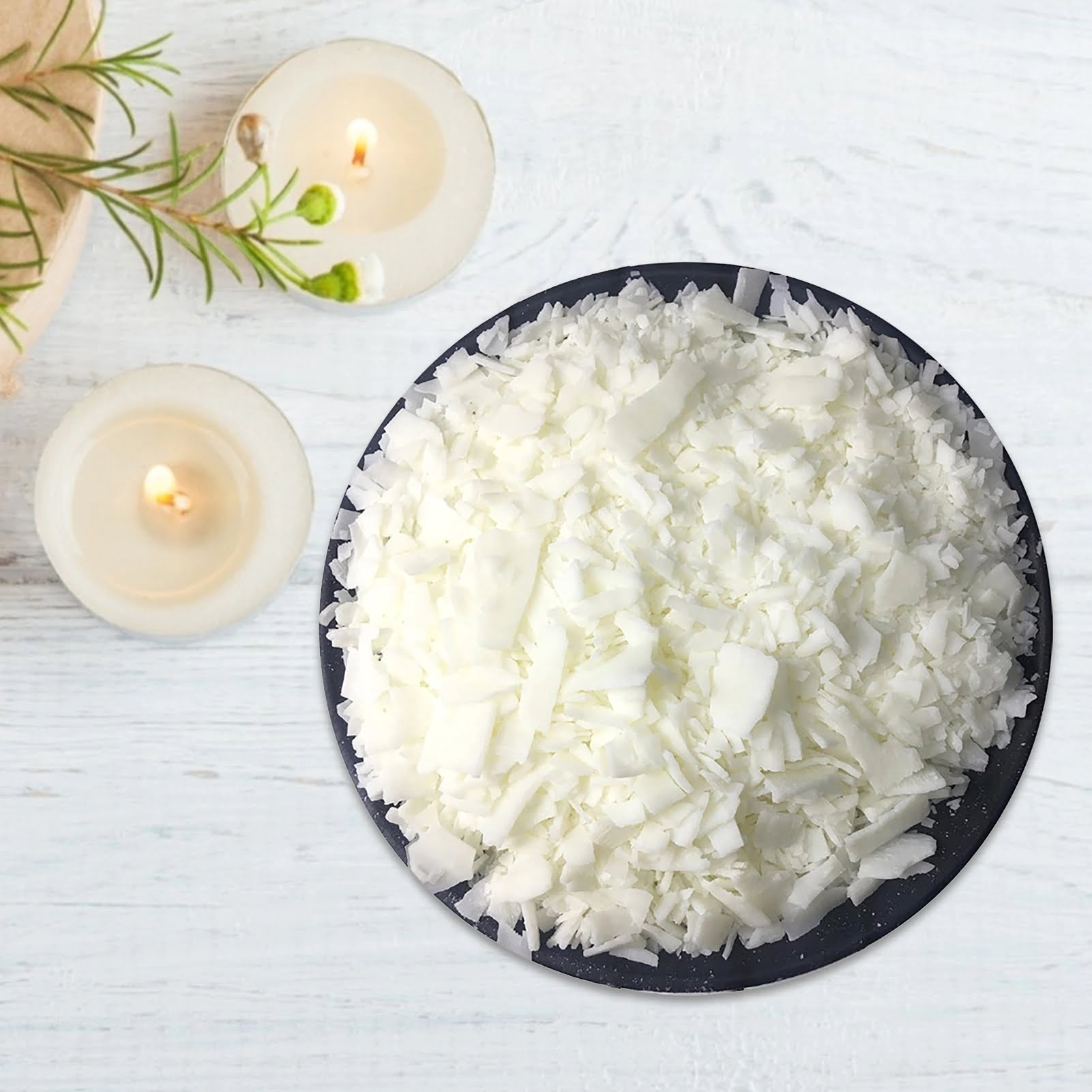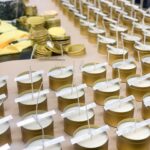Are you a fan of scented wax products and interested in crafting your own at home? A growing trend in the DIY community is making wax melts and candles from scratch. But is making wax melts the same as making candles? In this article, we will delve into the process of creating these popular homemade items and explore the differences between them.
As more people seek natural and customizable alternatives to store-bought wax melts and candles, the interest in homemade versions has been on the rise. Making wax melts and candles at home allows individuals to control the ingredients used, customize scents, and create unique, personalized products for themselves or as gifts. With easy access to tutorials and a wide range of supplies available, it’s no wonder many are diving into this fulfilling hobby.
In this section, we will provide an overview of the growing trend of making wax melts and candles at home. We’ll discuss the processes involved in creating these products, from understanding what they are made of to exploring step-by-step guides for crafting them from scratch.
Whether you’re a seasoned crafter looking to expand your skills or a beginner with an interest in homemade goods, this article will offer valuable insights into the world of DIY wax melts and candle making.
What Are Wax Melts
Wax melts are becoming increasingly popular as people look for alternative ways to fill their homes with beautiful scents. They are small, scented pieces of wax that are melted using a warmer or burner to release fragrance into the air. Making wax melts at home is a fun and creative process that allows you to customize the scents and colors to your preference.
When making wax melts, it is important to gather all the necessary ingredients and equipment. The key ingredients for wax melts include wax (such as soy wax or beeswax), fragrance oil or essential oil, and color dye (if desired). You will also need a double boiler or a microwave-safe container for melting the wax, a mold for shaping the wax melts, and a stirring utensil.
Here is a step-by-step guide on how to make wax melts at home:
1. Melt the wax: Use a double boiler or microwave to melt the wax until it reaches a liquid state.
2. Add fragrance and color: Once the wax is melted, add your chosen fragrance oil or essential oil, as well as color dye if you want to add some visual appeal.
3. Pour into molds: Carefully pour the melted wax into your molds and allow them to cool and harden.
4. Remove from molds: Once the wax has completely cooled and solidified, remove them from the molds and they are ready to be used in a wax melt warmer.
Making wax melts does share some similarities with making candles in terms of using similar ingredients such as soy wax and fragrance oils. However, there are also distinct differences in the process of creating each product.
The main difference is that when making candles, wicks are added for burning whereas with wax melts no wicks are needed since they are meant to be warmed not burnt. Additionally, because of these differences there can also be variations in scent throw between candles and melts when burned/warmed resulting in different strengths of scent released into atmosphere.
How to Make Wax Melts
Gather Your Materials and Ingredients
To make your own wax melts at home, you will need a few key materials and ingredients. First, you will need a heat-resistant container to melt the wax in – a double boiler is recommended to avoid direct heat. You will also need quality wax specifically designed for making melts, fragrance oil of your choice, dye or color blocks (if desired), a thermometer, molds for the wax melts, and a stirring utensil.
Melt the Wax
The first step in making wax melts is to melt the wax. Add the desired amount of wax to your double boiler and heat it gently until it reaches the recommended temperature for melting. It is important to monitor the temperature closely using a thermometer to prevent overheating.
Once the wax has melted completely, you can add your chosen fragrance oil to the mixture. It is essential to follow specific guidelines for fragrance oil usage to ensure that your wax melts have a pleasant scent without being overpowering.
Pouring and Setting
After mixing in the fragrance oil thoroughly, it’s time to pour the melted wax into your chosen mold. Be sure to pour carefully and evenly to avoid any spills or air bubbles in the finished product. Allow the wax melts to cool and harden completely before attempting to remove them from their mold.
Making your own wax melts at home can be an enjoyable and rewarding experience. Not only do you have control over the scents used, but you can also create unique designs and shapes according to your preferences. Making wax melts may share some similarities with making candles, but it also involves its own distinct process and techniques that set it apart.
What Are Candles
When it comes to creating a cozy and inviting atmosphere at home, candles undoubtedly play a significant role. There is a growing trend of making wax melts and candles at home, as more and more people are discovering the joy and satisfaction of crafting their own scented products. But before diving into the process of making your own candles, it’s essential to understand the different types of candles available and their various uses.
Here are some common types of candles:
- Pillar Candles: These are freestanding candles that can vary in size and shape, making them versatile for both decoration and lighting purposes.
- Container Candles: As the name suggests, these candles are poured into containers such as jars or tins, allowing for easy storage and a longer burn time.
- Taper Candles: These long, slender candles are often used for formal occasions or religious ceremonies due to their elegant appearance.
- Votive Candles: Typically small in size, votive candles are designed to be placed in a holder or container for safe burning.
- Tealight Candles: These tiny candles are ideal for creating an ambient atmosphere, usually placed in small holders or scattered around a room.
Each type of candle serves a specific purpose, whether it’s providing illumination during power outages, adding ambiance to a dinner table, or simply filling a room with delightful fragrance. Understanding the different types of candles can help you determine which ones you’d like to make at home based on your preferences and needs.
Overall, making wax melts is not entirely the same as making candles. While both processes involve melting wax and adding fragrance oils, there are differences in terms of molds or containers used, as well as the addition of wicks for candles. Additionally, the fragrance load may vary between wax melts and candles due to differences in the way they release scent. It’s important to consider these distinctions when embarking on your homemade wax melt or candle-making journey.
How to Make Candles
Making candles at home is a popular and fulfilling hobby that allows individuals to create their own custom scents, colors, and designs. While making wax melts and making candles both involve working with wax, the processes are not entirely the same. The key difference is in the final form of the product and the method of dispersing fragrance.
To make candles at home, you will need a few essential materials and tools including wax, wicks, a double boiler or melting pot, a thermometer, fragrance oils (if desired), and containers for the finished candles. The first step is to melt the wax using a double boiler or melting pot over low heat while monitoring the temperature with a thermometer. Once the wax reaches the desired temperature, fragrance oils can be added if desired.
After adding fragrance oils, the next step is to carefully pour the melted wax into containers while ensuring that wicks are centered and secured in place. Once poured, allow sufficient time for the candles to cool and set before trimming wicks to an appropriate length.
There are also different techniques for making candles at home such as using molds or creating hand-poured container candles. Overall, making candles involves a slightly different process compared to making wax melts due to the final form of the product and specific techniques used in candle-making.
Is Making Wax Melts the Same as Making Candles
Making wax melts and making candles are two related but distinct processes. While both involve the use of wax and fragrance, there are several differences between the two that set them apart. In terms of process, making wax melts is simpler and faster than making candles.
Wax melts, also known as wax tarts or wax cubes, are designed to be melted in a warmer to release their fragrance. On the other hand, candles require wicks and containers to hold the liquid wax as it solidifies.
One key difference is the ingredients used in each process. Wax melts typically require a higher concentration of fragrance oil compared to candles since they are not burned and the heat source is generally lower. Conversely, candle-making involves different types of waxes such as soy wax, paraffin wax, or beeswax, which may have varying melting points and burning characteristics.
In terms of equipment used, making wax melts requires a mold for shaping or portioning the melted wax along with a warmer or melter for use at home. Candle-making necessitates additional equipment such as wicks, containers, pour pots, and thermometer to control temperature during pouring. Overall, while there are similarities between making wax melts and candles in terms of using fragranced wax, the processes involved reveal clear distinctions between the two practices that cater to different preferences and needs.
| Wax Melts | Candles |
|---|---|
| Simple and fast process | Involves wicks and containers |
| Requires higher concentration of fragrance oil | Uses various types of waxes with different melting points |
| Needs molds for shaping wax; uses warmers/melters at home. | Requires additional equipment such as pour pots and thermometers. |
Differences Between Wax Melts and Candles
Making wax melts is not the same as making candles, even though both involve using wax and fragrance. The key difference lies in the purpose of each product. Wax melts are designed to be used with a wax warmer, where they are slowly melted to release their fragrance. On the other hand, candles are meant to be burned to provide both light and scent.
Another major difference between wax melts and candles is the method of fragrance release and longevity. Wax melts tend to release fragrance more quickly and intensely because the wax is melted at a higher temperature compared to candles. However, the fragrance from wax melts may not last as long as that from candles since it is dependent on how quickly the wax melt is used up.
The scent throw of wax melts also differs from that of candles due to the way each product is designed. Wax melts have a strong initial scent throw because they are meant to fill a room relatively quickly when placed in a warmer. Candles, on the other hand, have a more subtle and lingering scent throw throughout their longer burn time.
| Wax Melts | Candles |
|---|---|
| Designed for use with wax warmers | Intended for burning for light and scent |
| Fragrance released more quickly | Fragrance released more slowly over longer period |
| Strong initial scent throw | Subtle and lingering scent throw during burn time |
Tips for Successful Wax Melts and Candle Making
Making wax melts and candles at home has become a popular trend in recent years, with many people finding joy and satisfaction in creating their own scented products. Whether you’re a beginner or experienced crafter, there are some expert tips and tricks that can help ensure successful homemade wax melts and candles.
Choosing the Right Wax
One of the most important factors in making successful wax melts and candles is choosing the right type of wax. For wax melts, soy wax is a popular choice due to its ability to hold onto fragrance oils. When it comes to candles, soy wax, beeswax, and paraffin wax are commonly used. Each type of wax has its own melting point and fragrance-holding capabilities, so it’s important to choose the right one for your specific project.
Selecting High-Quality Fragrance Oils
The fragrance oil used in wax melts and candles plays a crucial role in the end product. It’s essential to use high-quality fragrance oils that are specifically designed for candle making. Look for oils that are strong, long-lasting, and compatible with the type of wax you’re using. Additionally, consider experimenting with different scent combinations to create unique fragrances that stand out.
Temperature Control
Maintaining proper temperature control during the melting and pouring process is key to successful wax melt and candle making. Use a reliable thermometer to monitor the temperature of the melted wax or melted oils throughout the entire process. This ensures that the fragrance is added at the optimal temperature for maximum scent throw without compromising the quality of your final product.
By following these expert tips and tricks, beginners can set themselves up for success when making homemade wax melts and candles. With careful consideration given to ingredients, temperature control, and scents, crafters can create high-quality products that rival store-bought alternatives without breaking a sweat.
Conclusion
In conclusion, while making wax melts and making candles share some similarities, the processes involved are not exactly the same. Both activities require melting wax and adding fragrance, but the end results and uses differ. Wax melts are designed to release fragrance when heated, while candles provide both light and scent. Additionally, different equipment and techniques are often used for each craft. Therefore, it is important to understand the distinctions before attempting either one.
Despite the differences, both wax melts and candles can be fun and rewarding to make at home. By following step-by-step guides and expert tips, beginners can easily create their own unique scents and designs. With endless possibilities for personalization, homemade wax melts and candles can also make great gifts for friends and family.
In summary, with a little practice and creativity, anyone can become skilled at making wax melts and candles. The satisfaction of crafting your own aromatic products is unmatched by store-bought alternatives. So why not give it a try? Gather your materials and get ready to enjoy the sensory pleasures of creating beautiful scents right in your own home.
Frequently Asked Questions
Are Wax Melts Made the Same as Candles?
Wax melts are not made the same way as candles. While both use wax and fragrance, wax melts are designed to be melted in a warmer, releasing their scent without an open flame. Candles, on the other hand, require a wick to be burned, melting the wax and releasing the fragrance into the air.
Is It Better to Burn Candles or Wax Melts?
Whether it’s better to burn candles or wax melts depends on personal preference. Candles provide a warm ambiance and can be soothing to watch as they burn, while wax melts offer a safer alternative with no open flame.
Both options can effectively fill a room with pleasant scents, so the choice ultimately comes down to individual preferences and safety considerations.
Can I Use Wax Melts to Make Candles?
It is possible to use wax melts to make candles by melting down the wax and adding a wick before allowing it to cool and harden again. However, this process may not yield the same quality candle as using candle-specific wax.
Wax melts are designed to melt at lower temperatures for releasing fragrance without burning, so their composition may not be ideal for candle-making purposes.

Welcome to my candle making blog! In this blog, I will be sharing my tips and tricks for making candles. I will also be sharing some of my favorite recipes.





